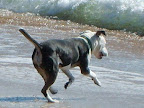 The slide in consumer sentiment, which began in July, appears to have been stemmed in October with the index closing at 40.3 up slightly from September’s 38.1. However, this improvement is not bolstered by other measures.
The slide in consumer sentiment, which began in July, appears to have been stemmed in October with the index closing at 40.3 up slightly from September’s 38.1. However, this improvement is not bolstered by other measures.The recent decline in sentiment was ushered in by a period of increased personal financial difficulties and consumer stress. Financial difficulties as measured by the Trouble Tracker have risen sharply from the low of 48.5 in May 09 to 62.3 in September and continued to rise for October (66.7) the greatest increase since July. The Consumer Stress Index stands at 63.5, on par with September and up significantly from its low in June 09 of 57.0.
Though recent losses for the Past 30-Day and Next 30-Day Retail Indices* were stemmed in September after a substantial decline in August there was no growth apparent for October.
Additionally the Job index turned downwards in October reflective of heavier job losses in September relative to the prior month.
What we are left with is a truly mixed picture. Though stability has returned to the retail index it has not been able to demonstrate growth for three straight periods. With the holiday season fast approaching this has dire implications for expectations this season.
The economy is in a precarious position balanced between recovery and further decline. Without substantial improvements in the consumer’s condition as measured by the Trouble Tracker Index, Employment Index, and Retail Indices it is doubtful that a meaningful consumer recovery will be mounted in this calendar year.
*major appliances, small appliances, home electronics, personal electronics, major yard/garden equipment

